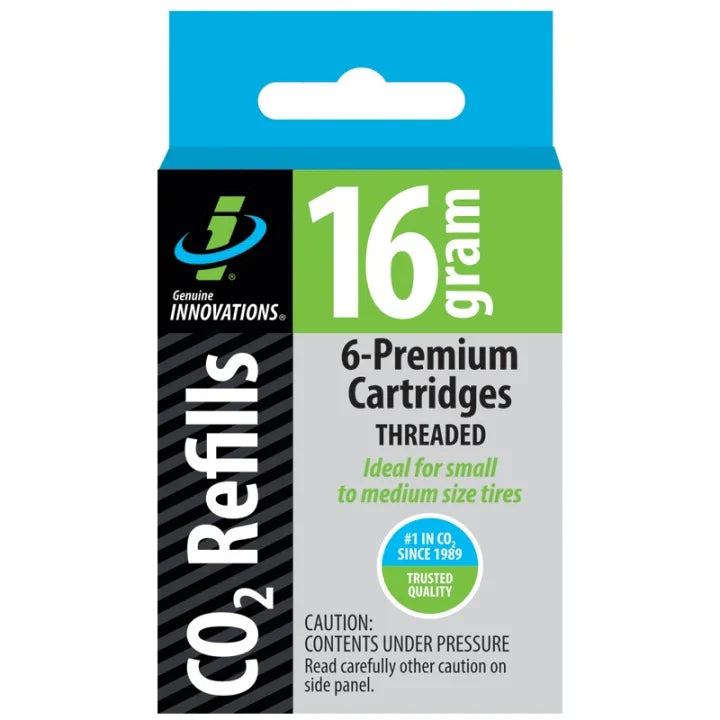
CO2 Cartridges: The Essential Power Behind Your Net Gun
Share
CO2 Cartridges: The Essential Power Behind Your Net Gun
Your net gun is a critical tool for humane animal capture, but its reliability and performance depend entirely on one small, indispensable component: the CO2 cartridge.
The right cartridge, used correctly, ensures maximum deployment range, consistent pressure, and reliability when you need it most. This guide covers the specific requirements for professional net guns, explains the critical 16 gram (16g) standard, and details best practices for storage and usage to maximize every shot.
Why the 16 Gram CO2 Cartridge is the Industry Standard
Not all CO2 cartridges are created equal. While many airguns use smaller 8 gram or 12 gram cartridges, professional net guns are designed specifically for the 16 gram standard.
1. Power and Performance
The primary function of the CO2 cartridge is to deliver a massive burst of pressure to propel the net and weights downrange.
-
More Mass, More Gas: The 16g cartridge contains the optimal volume of CO2 to ensure the net achieves its full range and wide spread, even under varied environmental conditions.
-
Pressure Consistency: The higher mass of the 16g cartridge helps maintain better pressure over the full volume needed for deployment, ensuring your shot is as powerful as intended.
2. Standardization for Reliability
The 16 gram format is the standard size engineered to operate perfectly with your net gun’s firing mechanism, piercing pin, and internal gas chamber. Using a smaller size risks poor performance, misfires, or potential damage to the valve system. For professional use, sticking to the tested and recommended 16 gram cartridge guarantees consistent results.
Getting the Most Out of Every Cartridge
The difference between a successful, powerful shot and a weak one often comes down to how you handle and use your CO2. Follow these three critical steps for professional reliability:
1. The Right Time to Puncture (The Standby State)
Do not puncture the CO2 cartridge until you are ready to fire.
Net guns are designed with a standby position where the cartridge is secured but not pierced. Puncturing the cartridge too early allows the gas to slowly stabilize within the chamber, reducing the immediate punch and power needed for a quick, far-reaching net deployment.
Best Practice: Load the net head and place the cartridge into the gun, but keep the retention screw/cap slightly loose in the standby position. Only turn it decisively to pierce the seal seconds before you aim to fire.
2. Temperature Management is Key
CO2 is stored as a liquid and converts to gas inside the cartridge. This process is highly sensitive to temperature.
-
Cold Weather: Low temperatures significantly reduce internal pressure, leading to a weaker shot. In cold conditions, store your unused cartridges in an inner pocket or a lightly warmed kit bag to ensure they are at ambient temperature or slightly warmer before deployment.
-
Hot Weather: Excessive heat causes pressure buildup, which can be dangerous and leads to a faster-than-necessary release of gas. Always store your net gun and spare cartridges out of direct sunlight and never in a hot vehicle.
3. Proper Removal and Maintenance
Once a cartridge is pierced, the pressure begins to compress the internal O-rings and seals.
-
Never Store Pierced: Once the net gun has been fired, always remove the used CO2 cartridge before storing the equipment. Leaving a pierced cartridge in place for extended periods can damage the seals, leading to future gas leaks and reduced performance.
Net Gun Cartridge Checklist
| Item | Requirement | Why it Matters |
| Size | 16 Gram (16g) | Delivers the necessary volume for maximum range and net spread. |
| Condition | Clean & Unpierced | Ensures immediate, maximum pressure upon deployment. |
| Temperature | Ambient | Optimal temperature for consistent, reliable internal pressure. |
For safe, humane, and effective wildlife capture, the quality of your CO2 matters. Stock up on certified 16 gram cartridges to ensure your net gun is always prepared to perform at its peak when the call comes in.


